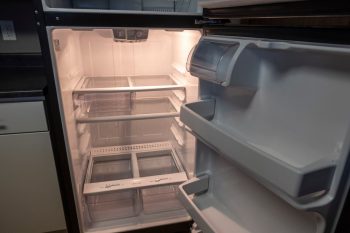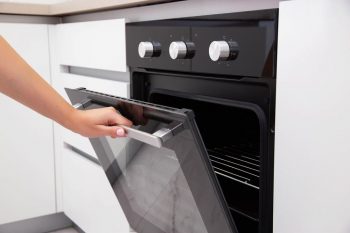
In today’s fast-paced world, dishwashers have become a necessity in many households. They save time, reduce dish clutter, and can even save water compared to hand washing. But have you ever wondered what happens if you put non-dishwasher safe items in the dishwasher?
Putting non-dishwasher safe items in the dishwasher can lead to several issues. These can include damage to the items such as cracking, warping, or discoloration, deterioration of nonstick coatings, damage to glued or composite materials, and fading of hand-painted ceramics. Some materials may even release harmful chemicals when heated in the dishwasher. Non-dishwasher safe items can also potentially damage the dishwasher itself. Therefore, it’s always safer to hand wash these items.
Understanding Non-Dishwasher Safe Items
When an item is labeled as “non-dishwasher safe,” it means that the item is not suitable for cleaning in a dishwasher and should be washed by hand instead. Non-dishwasher safe items include materials like wooden utensils, cast iron cookware, aluminum, copper, nonstick cookware, and fine china. These items can be damaged by the dishwasher’s cleaning process, potentially affecting their functionality or appearance.
The Risks of Placing Non-Dishwasher Safe Items in the Dishwasher
Placing non-dishwasher safe items in the dishwasher can lead to various risks and negative consequences. These include:
- Damage to the items: Non-dishwasher safe materials can become damaged when exposed to heat and water pressure in the dishwasher. For example, fine china can crack, and wood can warp or decay.
- Discoloration: Some metals, such as sterling silver, pewter, aluminum, brass, and copper, can discolor when washed in the dishwasher.
- Warping or melting: Plastics and other materials that are not heat-resistant can warp or melt in the dishwasher.
- Deterioration of nonstick coatings: Nonstick coatings on cookware can deteriorate rapidly in the dishwasher, reducing their effectiveness.
- Damage to glued or composite materials: The glue that binds hollow-handle knives, wooden cutting boards, or other laminates can melt or soften in the dishwasher.
- Fading of hand-painted ceramics: Glossy, gold-colored, or hand-painted items can dull and fade in the dishwasher.
- Release of harmful chemicals: Some plastics may release harmful chemicals like BPA when heated in the dishwasher.
- Damage to the dishwasher: Non-dishwasher safe items can potentially damage the dishwasher itself, for example, by causing blockages or other issues.
How to Identify Non-Dishwasher Safe Items
To identify whether an unlabeled item is dishwasher safe or not, you can look for certain symbols or markings. Although there is no universally approved symbol for dishwasher safe items, some common symbols include a square box containing plates, glasses, or both, often accompanied by water drops or lines. If you don’t see any of these symbols, it’s best to err on the side of caution and hand wash the item to avoid potential damage.
Cleaning Non-Dishwasher Safe Items
Cleaning non-dishwasher safe items by hand is the safest and most effective way to maintain their quality and longevity. Some effective ways to clean non-dishwasher safe items include using mild dish soap, eco-friendly cleaning accessories, white vinegar, baking soda and hot water, liquid castile soap and water, lemon juice, and salt and boiling water. Always follow the manufacturer’s cleaning instructions for each specific item to avoid damaging them.
In Conclusion
While dishwashers are a fantastic tool for easy and efficient cleaning, they’re not suitable for all items. It’s essential to understand which items are safe to clean in the dishwasher and which aren’t to maintain the quality and long life of your kitchenware. When in doubt, it’s always safer to hand wash an item. By taking a little extra time to care for your non-dishwasher safe items, you can keep them in great condition for years to come.
Frequently Asked Questions
What are the signs of a non-dishwasher safe item being damaged in the dishwasher?
Signs of damage can vary depending on the material of the item. For example, wooden items may appear warped, discolored, or have a rough texture. Metal items may tarnish or develop rust. Plastic items may warp or melt, and items with nonstick coatings may appear dull or have visible scratches.
Can I put glassware in the dishwasher?
Yes, most glassware can be safely washed in the dishwasher. However, delicate or hand-painted glassware, crystal, and items with gold leaf or other decorative details should be washed by hand to prevent damage.
Why do some plastics release harmful chemicals when heated in the dishwasher?
Some plastics contain chemicals like Bisphenol A (BPA) or phthalates, which can leach out when the plastic is heated. These chemicals are endocrine disruptors and can have harmful effects on human health.
Are there any dishwasher-safe alternatives to non-dishwasher safe items?
Yes, many manufacturers offer dishwasher-safe alternatives to commonly used kitchen items. For example, instead of wooden cutting boards, you could use dishwasher-safe plastic or composite cutting boards. Similarly, there are dishwasher-safe pots and pans made from stainless steel or hard-anodized aluminum.
How can I tell if an item is dishwasher safe if it doesn’t have a label or symbol?
If an item doesn’t have a label or symbol indicating it is dishwasher safe, it’s best to err on the side of caution and hand wash it. You can also check the manufacturer’s website or contact them directly for more information.












